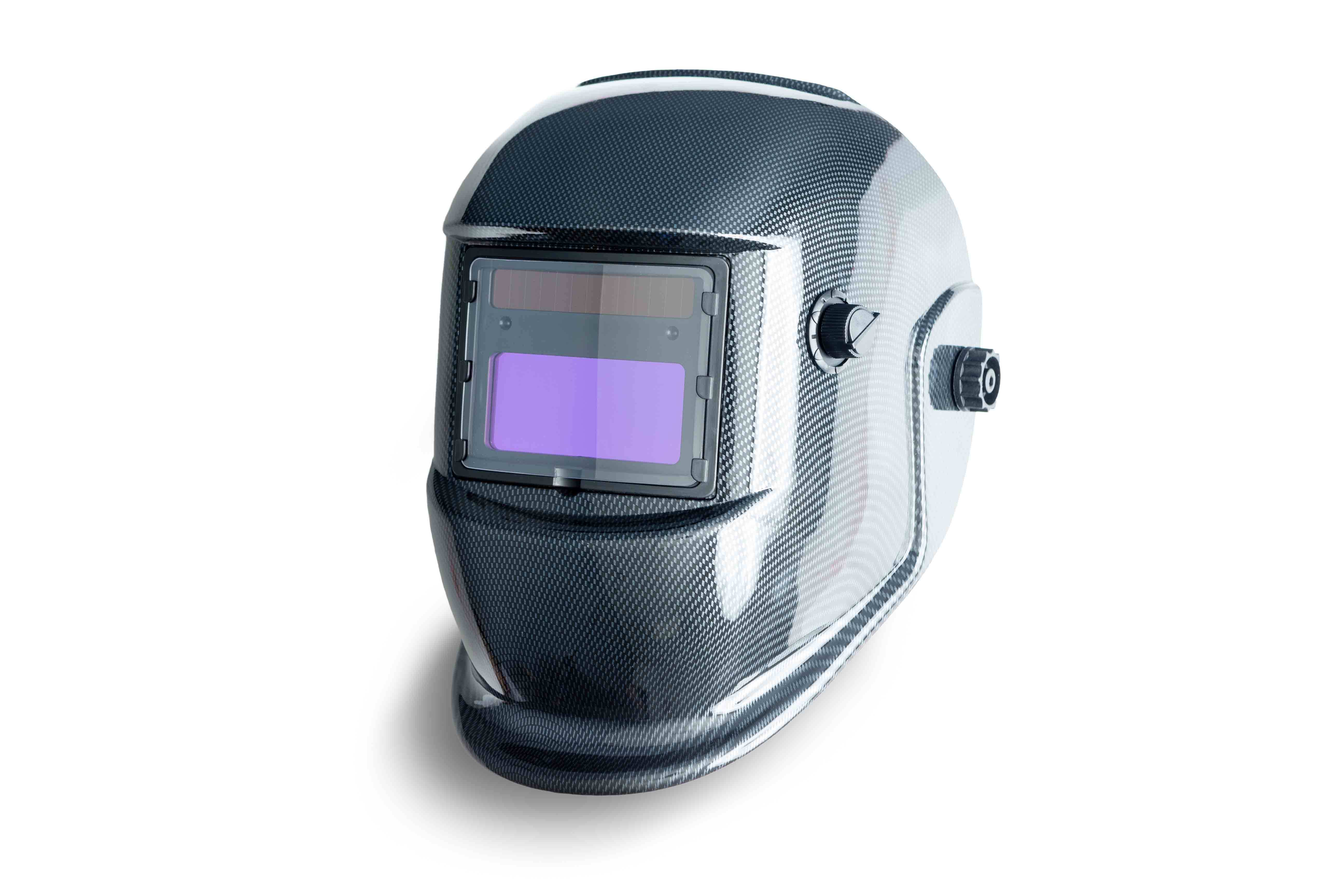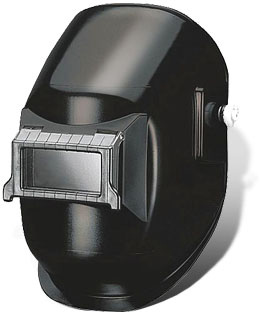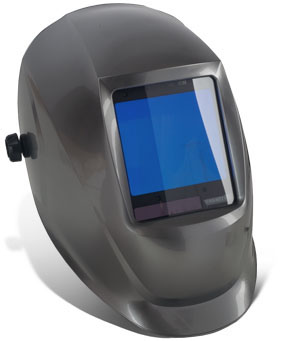

Tips for Choosing a Welding Helmet
By Grainger Editorial Staff 8/9/21
Whether your welding takes you out on an oil rig or into a mechanic’s garage, you need the right protection for your eyes in every work environment. Many welders find that if they invest a little more in their helmet, it can make a big difference in comfort and overall welding ability, while also helping to provide better protection. That said, welding helmets come in a wide variety of price ranges and are made for different applications. Here are 5 important considerations to think about when choosing a welding helmet.
1. Do I Need a Single Fixed Shade or Variable Shade Lens?
A standard welding helmet, also sometimes referred to as a passive welding helmet, features a viewing lens with a static ultraviolet (UV) and infrared (IR) filter, usually a #10 shade. This filter offers the same level of protection no matter how many amps the light gives off from the weld. When a welder is ready to work, he will need to lower this kind of helmet with a quick nod or snap of the neck to flip the helmet down while keeping the torch in position. When work is complete, the welder has to lift the helmet to see.

While standard helmets with fixed lenses are often less expensive, they have some drawbacks. For an inexperienced welder, it can take some practice to keep the torch steady and in the right location after snapping the welding helmet into place. Also, if you’re welding in a restricted area or confined space, there isn’t always room to maneuver or to flip a helmet up or down. Lifting and lowering a helmet also adds to your work time, which can have an impact on productivity.
However, if most of your welding tasks only involve one kind of material, at the same thickness, and if you’re always using the same process at a fixed amperage, then there’s really no need to buy anything more than a fixed shade #10 standard helmet.
Know the Standard for Welding Helmets
ANSI Z87.1-2003
The most recent safety standard for welding helmets is ANSI Z87.1 – 2003. This standard requires helmet and auto-darkening lens manufacturers to demonstrate from laboratory testing that they can validate helmet specifications such as switching speeds and darkness shade settings.
Not all welding helmets on the market today meet the current safety standard, which is an important thing to look for when choosing a welding helmet. Check that the helmet packaging is marked specifically for ANSI Z87.1 – 2003 or Z87+ which proves the helmet has the latest approval of the American National Standards Institute and Society of Safety Engineers. If all you see is “ANSI Approved” it doesn’t guarantee that it passed the 2003 standard.

Variable Shade welding helmets feature auto-darkening filters with an electronic filter lens. An auto-darkening filter or ADF, is a liquid crystal display that features light sensors mounted near the lens to detect the welding arc. When the lens is not activated, the LCD filter will typically have a #3 or 4 shade, similar to sunglasses so it’s easy to see with the helmet in place. Once a welding arc is started, sensors on the helmet will darken the lens to a shade from #9 to #13. The advantage of this helmet is that it can stay in place before you start work allowing you to set up a welding joint with the helmet in position. You can also keep the helmet in place for the length of the task, with no lifting or lowering needed.
Welding different materials of varying thickness requires different welding processes, such as stick, MIG or TIG. With these variables the amperage from a weld can range from 40 to more than 200 amps. If your job requires varying techniques and materials, you will need a variable shade lens for adequate eye protection.
2. What About Switching Speed?
The lens switching speed or reaction time is how fast a lens will switch from its natural state to a shade 3 or 4 when welding begins, and is usually expressed in ratings of 1/3,600 of a second to as high as 1/25,000. If your job requires welding for several hours at a time, an entry-level switching speed may cause eye fatigue by the end of the day. If this is the case, consider going to an intermediate or professional level switching speed when choosing a welding helmet.
3. Battery, Solar Power or Both?
Auto darkening helmets offer a variety of power options. Some feature internal non-replaceable batteries and solar assist panels. Others have replaceable batteries with solar assist panels. Some offer lithium batteries, which are great for extended battery life, but they also aren’t as widely available as AAA batteries. Lithium batteries also cost more. Some helmets with solar assist panels require a charging period in direct sunlight before they can be used. The decision here is probably a personal one, but for wide availability and economical battery replacement cost, choose AAA battery operated. For extended battery life, choose lithium.
4. Does Helmet Weight Matter?

Yes. A lighter weight welding helmet will minimize neck strain and reduce fatigue with extended use. Choosing your helmet weight will really depend on the combination of all of the other factors along with how long each day you plan on using it. Again, if welding is your primary task, choose a welding helmet with the lightest weight possible for your budget.
5. What about Personal Preference?
All welding helmets are designed to protect workers from the ultraviolet and infrared dangers emitted from welding arcs. Still there are many options on the market. Knowing whether you will be using the helmet for one specific task or many is the first consideration. Aside from that there is budget, weight, viewing lens and more. Most of all choose a helmet that’s most comfortable for you and that you can wear for an extended period of time if needed. Taking the extra time to choose the right fit can pay off in terms of productivity and weld quality.
The information contained in this article is intended for general information purposes only and is based on information available as of the initial date of publication. No representation is made that the information or references are complete or remain current. This article is not a substitute for review of current applicable government regulations, industry standards, or other standards specific to your business and/or activities and should not be construed as legal advice or opinion. Readers with specific questions should refer to the applicable standards or consult with an attorney.






